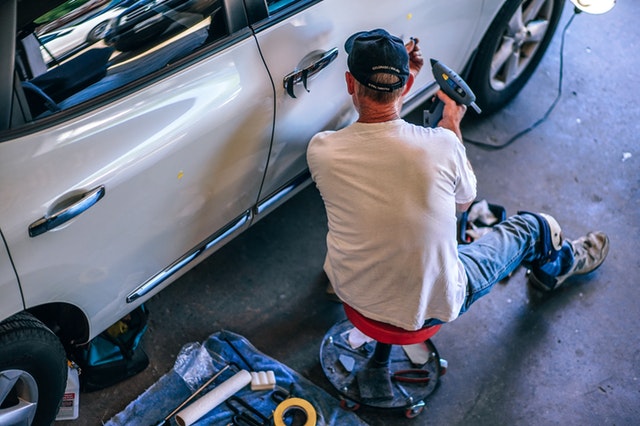<p style="text-align: justify;">As vehicle owners have learned the hard way, a thunderstorm can drop ice chunks of varying sizes known as hail instead of rain as it sweeps through a region. Depending on its size, a hailstone can hit a vehicle with such force that it stretches the paint and metal to the point that it leaves behind dents ranging between as small as a pea, marble, dime or nickel and as large as a quarter, fifty-cent piece, tennis ball, baseball, coconut or even a basketball. When the paint inside or around the dent shows no sign of scratches or cracks, the best method to correct the damage is Paintless Dent Repair. PDR, also known as paintless dent removal, is a repair technique that involves an experienced technician gently coaxing the surface of an aluminum or steel vehicle panel back into its original factory-finished position using precise tools designed for this purpose. PDR is the best choice for vehicle hail damage for the following four reasons:</p>
<h3 style="text-align: justify;"><strong>Value:</strong></h3>
<p style="text-align: justify;">Paintless Dent Repair costs far less than filling and repainting a hailstone dent or replacing an entire vehicle panel and then color-matching the surface. Even if some scratches or cracks in the paint exist and paint repair is necessary, any reduction in the size of the dent using a PDR tool can reduce the amount of filler and paint needed to make the repair and the associated labor hours. In terms of long-term value though, retaining the original, higher-quality manufacturer&#8217;s paint maintains the value of the vehicle at a higher level than when a technician must use filler and paint to fix hail damage. In fact, paintless repair prevents future costly repairs that can sometimes occur as the result of bad fill and color-match jobs. After the completion of PDR services, you also don&#8217;t have to worry about normal vehicle wear and tear causing metal or paint buckling or re-indentation. Additionally, this type of service doesn&#8217;t usually impact your vehicle&#8217;s warranty or increase insurance premiums. Insurers actually prefer PDR because it has an associated low-risk for follow-up repairs and costs them less money.</p>
<h3 style="text-align: justify;"><strong>Control:</strong></h3>
<p style="text-align: justify;">Many vehicle owners have seen late-night infomercials or online ads and blog posts with product links that promote do-it-yourself dent repair tools and kits. The problem with D-I-Y repair is that either the tools cause scratches, cracks or messy surface ripples by popping a dent out too fast and overstretching the metal or paint or the vehicle owner doesn&#8217;t have the physical control or experience necessary to handle the tool correctly. A professional who has the right tools and hands-on experience can re-position the metal and paint through a series of gentle pushes or pulls without causing overstretching. Since many body panels aren&#8217;t entirely open for easy access, a professional also has special tools and knowledge that allows them to access almost effortlessly areas under panels that do-it-yourself vehicle owners would consider extremely hard-to-reach spaces.</p>
<h3 style="text-align: justify;"><strong>Convenience:</strong></h3>
<p style="text-align: justify;">Unless you have experience with performing these types of auto body repairs, a PDR expert can do the job cheaper, faster and more accurately than you could if you were to go the D-I-Y route. Paintless dent removal is also far easier than other alternatives. As a result, you don&#8217;t have to wait long for completion of the repairs. The repair process often only takes a few hours or a day. You may have heard that PDR repairs can take several weeks. Depending on how your insurer responds, it can take several weeks for a technician to start the repairs but only because your insurer might require that their own adjuster review the damage and provide an estimate. This process can take several weeks depending on the adjuster&#8217;s schedule and estimate negotiations. Of course, many PDR professionals have rental or even free loaner cars available for their customers to use while they wait.</p>
<h3 style="text-align: justify;"><strong>Safety:</strong></h3>
<p style="text-align: justify;">Lastly, PDR is a safer hailstone dent repair service than filling and repainting or combined full panel replacement and painting. Every time body shop technicians use to fill and paint supplies, they risk the health and safety of themselves, any customers nearby and the environment. The supplies and their byproducts, such as particles from sanding, contain toxic chemicals that can irritate or damage the eyes and lungs or even cause cancer in humans. These chemicals can also pollute the air, water and ground during use and waste disposal. Technicians always take precautions, but accidents can happen. They also can&#8217;t control what happens to the waste after it leaves their shops. On the other hand, true PDR carries none of these risks.</p>

Why Go For PDR For Hail Damage Repair?
